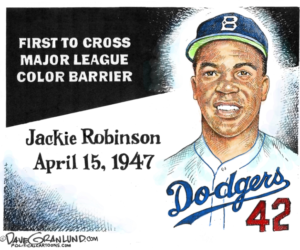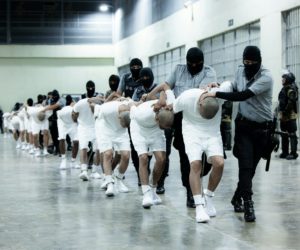A 19-year-old woman is raped in her home late at night by an intruder. She calls the police. No one answers. She leaves a message. No one returns her call. No one follows up.
One in three women like her “have been raped or have experienced an attempted rape,” says the New York Times.
According to a survey, the rate of sexual violence in rural villages like the one where the above-mentioned rape took place is as much as 12 times the national rate in the U.S.
If one wonders in what rural village, in which foreign country this could happen, the reader is in for a very unpleasant surprise, as I was, albeit the title of the Times article I was reading already gave it away.
Yes, the young woman whose ordeal the New York Times describes is an American Indian woman — a Native American woman — in Emmonak, Alaska, the United States of America.
While the rate of sexual assault for American Indian women is more than twice the national average, “no place, women’s advocates say, is more dangerous than Alaska’s isolated villages, where there are no roads in or out, and where people are further cut off by undependable telephone, electrical and Internet service,” according to the Times.
Some more unpleasant reports and statistics by the Times:
…[I]nterviews with Native American women here and across the nation’s tribal reservations suggest an even grimmer reality: They say few, if any, female relatives or close friends have escaped sexual violence.
[::]
The difficulties facing American Indian women who have been raped are myriad, and include a shortage of sexual assault kits at Indian Health Service hospitals, where there is also a lack of access to birth control and sexually transmitted disease testing. There are also too few nurses trained to perform rape examinations, which are generally necessary to bring cases to trial.
Women say the tribal police often discourage them from reporting sexual assaults, and Indian Health Service hospitals complain they lack cameras to document injuries.
[::]
In the Navajo Nation, which encompasses parts of Arizona, New Mexico and Utah, 329 rape cases were reported in 2007 among a population of about 180,000. Five years later, there have been only 17 arrests. Women’s advocates on the reservation say only about 10 percent of sexual assaults are reported.
[::]
Nationwide, an arrest is made in just 13 percent of the sexual assaults reported by American Indian women, according to the Justice Department, compared with 35 percent for black women and 32 percent for whites.
In South Dakota, Indians make up 10 percent of the population, but account for 40 percent of the victims of sexual assault. Alaska Natives are 15 percent of that state’s population, but constitute 61 percent of its victims of sexual assault.
The Justice Department did not prosecute 65 percent of the rape cases on Indian reservations in 2011.
For many more grim statistics, please read here.
The question, of course, is what is being done about it.
Sadly, an issue that should unite our lawmakers in serious attempts to bring justice and security to Native American women “has become one of the major sources of discord in the current debate between the White House and the House of Representatives over the latest reauthorization of the landmark Violence Against Women Act of 1994.”
The Times:
A Senate version, passed with broad bipartisan support, would grant new powers to tribal courts to prosecute non-Indians suspected of sexually assaulting their Indian spouses or domestic partners. But House Republicans, and some Senate Republicans, oppose the provision as a dangerous expansion of the tribal courts’ authority, and it was excluded from the version that the House passed last Wednesday. The House and Senate are seeking to negotiate a compromise.
In the meantime, back in Emmonak, Alaska, “the overmatched police have failed to keep statistics related to rape” and the young woman who was raped there — she is now 22 — has asked, “that her name not be used because she fears retaliation from her attacker, whom she still sees in the village.” The Times adds, “She said she knew of five other women he had raped, though she is the only one who reported the crime.”
















